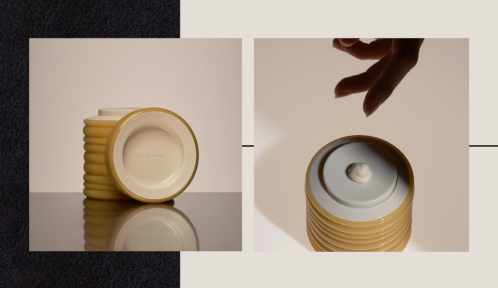Our editors independently select these products. Making a purchase through our links may earn Well+Good a commission
We’re in the midst of a sex-positivity boom that’s dispelling long-held beliefs about who can and should experience pleasure—which is, of course, all humans. But up until recently, that sexual-pleasure narrative centered almost entirely on people with penises, rooted first in the belief that non-procreative sex was taboo for people with vaginas, and later, in an evolved (but not any less sexist) understanding that, while folks with vaginas could find pleasure in sex, orgasm for penis-havers was both more powerful and more important. As societal norms propped up this perspective, few scientists sought to prove otherwise, which just reinforced the cycle—until the full anatomy of the clitoris was mapped in 2005, busting open a new world for female sexual pleasure.
Experts in This Article
sex educator and founder of Pleasure to People
wellness expert, doula, and founder of Mama Glow
sex educator with Lovers and co-author of The Ultimate Guide To Seduction and Foreplay
licensed psychotherapist, cognitive neuroscientist, and certified sex therapist
Yes, you read that right: It wasn’t until the 21st century that science existed to show the full internal and external parts of the clitoris. And as a result, misconceptions about it are still rampant today.
Shattering that pervasive lack of awareness about the clitoris was a large focus of the latest episode of Glowing Live With Latham on Well+Good’s IGTV. In it, doula and wellness activist Latham Thomas, founder of Mama Glow, and sex educator Cindy Luquin, MA, CSE, founder of sexual-health education platform Howl at the Womb, discuss how essential it is for all people to have a full understanding of their sexual body parts.
To hear the full discussion, check out the episode of Glowing Live With Latham below:
“The orgasm gap between people with vulvas and people with penises exists, in part, because we were not taught about the clitoris, which is this part of anatomy built solely for pleasure,” says Luquin. Instead, people tend to use “vagina” as a catchall term for female anatomy. “It’s overly focused on in our culture because it’s often the site of cis-male sexual pleasure, but it’s not necessarily the place of pleasure for people with vulvas,” says Thomas.
That place would be none other than the clitoris itself. In fact, we now know that a clitoral orgasm is often the easiest, fastest way for a vulva-haver to climax. Pair that with the fact that the clitoris was both un-studied until recently and is not typically stimulated by penetration, and it becomes clear why it took the world so long to understand that, sexually speaking, folks with a vulva are far more than reproductive machines.
What we’ve learned about sexual pleasure since the full anatomy of the clitoris was mapped
We can thank Australian urologist Helen O’Connell, MD, for the 2005 study in which she and her team applied fMRI technology to the clitoris to fully map its components for the first time. A few years prior, in 1998, she also conducted the first physical study of the clitoris on adult cadavers after coming across what are now considered the first anatomically correct images of the clitoris in the 1982 book A New View of a Woman’s Body, created by a group of women from the Federation of Feminist Women’s Health Centers. (That group, lacking scientific intel at the time, studied their own orgasms to create the images.)
“Pound for pound, if you have a vulva, you actually have the same amount of erectile tissue that people with penises have, but it’s just internal.” —Latham Thomas, doula and wellness activist
Dr. O’Connell’s full picture of the clitoris in her 2005 study took us far beyond the clitoral crown, or the external tip of the clitoris that lies just beneath a flap of skin called the clitoral hood. Her findings showed that the organ actually extends several inches into the body, branching into a shape that looks like a wishbone, says Thomas. “It’s all this amazing erectile tissue that wraps around [the urethra, toward the top of the vagina], and it all engorges when it’s stimulated,” she says. “Pound for pound, if you have a vulva, you actually have the same amount of erectile tissue that people with penises have, but it’s just internal.”
Recent research on the internal part of the clitoris has also unveiled some other anatomical details of note, according to sexologist and neuroscientist Nan Wise, PhD, who conducted the first study of the brain during clitoral stimulation in 2011. “The internal clitoris is fascinating since it consists of vestibular bulbs hugging the entrance of the vagina, which, when stimulated, can help vaginal penetration feel more pleasurable,” she says.
Clitoral legs, or those pieces that branch up internally, are also responsible for the sensations of the beloved G-spot, or a point on the front wall of the vagina connected to the paraurethral glands—and also what’s responsible for the experience of female ejaculation, or squirting, says Dr. Wise. And, of course, it’s only because the clitoris was ever mapped that we even know the slightest bit about how or why that can happen.
Why knowing the anatomy of the clitoris has big implications for pleasure
Having all this accurate information about the anatomy of the clitoris gives folks with a vulva clearer insight into how they might best achieve orgasm. “Understanding anatomy means that you can hit the spots that are important,” says sexologist Marla Renee Stewart, MA, sexpert for sexual-wellness brand and retailer Lovers.
Not to mention, it’s helpful to know the anatomy in order to effectively communicate it to a partner, too. “I always say, if you know how to play your own instrument, then you can play music with other people,” says Thomas.
The rise in understanding and awareness of the clitoris has also inspired sex-toy brands to invest time, energy, and effort into creating a wave of new products especially designed for it, says Stewart. But the pleasure revolution is far from complete, despite these recent strides: The more scientists uncover about the clitoris, the more we can improve the sexual experience for all people. And as we make up for centuries of lost time, the phrase “knowledge is power” couldn’t apply more.
Oh hi! You look like someone who loves free workouts, discounts for cutting-edge wellness brands, and exclusive Well+Good content. Sign up for Well+, our online community of wellness insiders, and unlock your rewards instantly.
Sign Up for Our Daily Newsletter
Get all the latest in wellness, trends, food, fitness, beauty, and more delivered right to your inbox.
Got it, you've been added to our email list.











